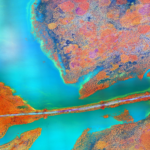They can be ravenous, consuming more than their body weight in a single bloody meal. Then they slip away into dark cracks and crevices waiting to feed on you again. Their bites leave itchy, burning marks on your skin and plant keen anxiety in your head.
For most people, the subject of bed bugs begs two questions: how do you avoid them? and how do you get rid of them?
A new editorial on bed bug biology in FACETS offers good and bad news on this front.
The bad news is that humans can make very attractive sources of food for cimicid insects, the species that includes bed bugs and their blood-feeding cousins. Cimicids have a long history of eating human blood, and they are well-established in many areas of human habitation.
There is evidence that cimicids and humans have been interacting for hundreds of thousands of years, and recent discoveries suggest that the bugs started sharing space with our cave-dwelling ancestors during the late Ice Age. By about 2,000 BCE, they were a common problem for humans on many continents.
While the pesticide DDT provided some relief during the 20th century, its environmental impact now makes its use impracticable. Today bed bugs are widespread and, in some regions, abundant annoyances that stubbornly resist extermination.
As the FACETS editorial describes, our modern-day blood-feeding friend likely evolved from a parasite that initially fed on bats and followed the winged mammals into human homes.
For cimicids, bats offer an abundant, dependable source of blood when they roost in nursery colonies of lactating females and dependent young. But as individuals in crevices around houses, bats with their small body size and mobility are not as attractive as humans. Our bodies hold about 50,000 times more blood than the average 10 g bat, and our blood flows more predictably because we are warm-blooded.
For such reasons, it appears that cimicids began to feed on humans and, in some cases, moved to favour this food source.
The possibility that bed bugs adapted and evolved in this way offers a glimmer of good news. In the FACETS editorial, the authors suggest that an integrated, multi-disciplinary study of biting-bug biology can, by drawing on both ecology and evolution, lead to new insights and a more effective means of study. This could point to ways for humans to adapt and perhaps beat cimicids at their game.
“At this point, we don’t know if this approach will solve the problem,” says Dr. Benoit Talbot of the University of Ottawa School of Epidemiology and Public Health and a co-author of the editorial. “But we believe it is important to bring the discussion to the table.”
A more informed study of the bed bug issue has importance because of the potential for increased public health challenges in the context of a changing climate, which would amplify interest in those questions of how to avoid bed bugs and how to get rid of them.
Read the full study: Bed bugs: The move to humans as hosts in FACETS.




